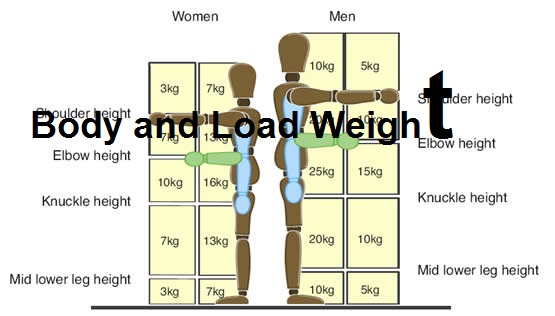Ideally, it is best to select the load-bearing weight as a function of body weight
rather than selecting an absolute load-weight per man. You may not have the flexibility to
tailor the load weight per man due to mission requirements. Therefore, an upper weight
limit for load-bearing should be calculated so the load will not create a higher physical
demand (energy cost) for individuals with smaller stature and lower lean body weight.
Determining the maximum weight of the load is a more important factor affecting
load-bearing than the type of load carriage design. Numerous studies have examined the
optimal load-bearing weight you should maximally carry before there is a disproportional
increase in the rate of energy expenditure. This is calculated as a percentage of body
weight. Although those who are physically fit according to Physical Fitness Test Scores can
typically carry 45% of their body weight for 8 hours at a pace of 4 mph, a lighter load is
considered optimal.
Body and Load Weight
“Rule of Thumb”: A maximal load should be 40% of body
weight. Example: 40% of 170 lbs. is 68 lbs.
energy
The energy cost of the task rises steeply beyond this percentage. It has been reportedthat the energy cost of humping with a load increases proportionally with the weight
carried. For loads more than 40% of body weight, the energy expenditure rises
disproportionately and fatigue occurs sooner. The key is to carry your load as close
as possible to your body’s center of gravity. This will result in the
cost when you carry a load, which is evenly distributed, on your back.


